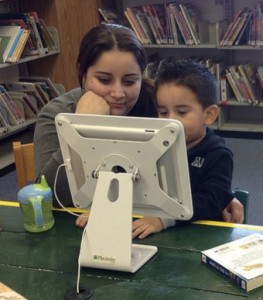
Informed citizens sometimes forget that the reason why negative, tragic or just plain-old bad news is news is because it’s the exception to the rule. That’s why it’s newsworthy. And this is true whether we’re hearing about airplane crashes or online bullying. Sometimes the news is unspeakably tragic, but it’s still the exception, not the rule. It’s not an event from which we can extrapolate what everybody’s experience is likely to be, or a set of conditions on which to base policy at any level – household, school, corporate or national policy.
Policy based on ‘the risk of the risk’?
It would be better to base policy on data that actually shows the likelihood of harm. That’s what we base decisions about crosswalks, stop signs and crossing guards on in school zones – the likelihood of an accident happening at certain intersections, a calculation we don’t have online, UK researcher Sonia Livingstone pointed out last fall. For example, when we’re talking about bullies online, we’re talking about “the risk of the risk,” she wrote. There’s the risk of bullying and then there’s the risk of harm that actually develops from this psychological bullying. Whether harm actually happens depends on a number of factors, including the target’s ability to shake off the harassment, get support from friends, and/or stand up to the bully, etc. Resilience levels have to be factored in, and of course the level of resilience or vulnerability is very individual, hard to generalize.
So, collectively, we haven’t figured out how to calculate the likelihood of harm online. Maybe we can’t – not just because online and on-phone activities are as varied as offline ones (social, educational, entertaining, etc.) and are experienced as individually as offline ones (and so very difficult to generalize), but even more importantly because online experiences are mediated. They’re happening in media, not in person. They’re once removed from reality, or physical space. David Finkelhor, director of the University of New Hampshire’s Crimes Against Children Research Center, even suggested in 2010 that, because of this, the Internet may even be a risk reducer (see “Related links” below).
Internet policy from the inside out
So should we base policy on the risk of the risk of harm? Not unless we have plenty of direct, first-hand experience of young people’s own experiences online – or, if we don’t have direct access to young people, base it on solid academic research about their experiences, not adults’ concerns about those experiences. One way to think of it is to develop policy from the inside out (the kid out), not the outside in (as in extrapolating something about our children or students from headlines, stump speeches, worst-case scenarios or polls about parents’ fears).
Policymakers should also know that, according to research, restricting negative uses of media also restricts positive uses. Policymaking efforts to reduce risk to children online also reduce their opportunities. “Opportunities and risks online go hand in hand,” according to a milestone report of EU Kids Online in 2011. “Most activities children do online can be beneficial or harmful, depending on the circumstances.” Just as was the case for us growing up without social media, “risky opportunities allow children to experiment online with relationships, intimacy and identity. This is vital for growing up if children are to learn to cope with the adult world.”
Ideally, young people themselves are part of the process of making policy that concerns them – or at least have a hearing during that process. Here‘s an example of how helpful their input can be. This is participatory media we’re talking about. So isn’t it only logical to get the input of the participants themselves – the policy’s intended beneficiaries – in making policy designed to optimize their media experiences?
Related links
- Another factor for policymakers to consider (and reason why we get stuck on the bad news): how our brains are wired
- “Understanding cyberbullying from the inside out”
- “Study on long-neglected factor in Net safety: Resilience”
- “Online risk in kids’ own words: A research milestone”
- “Youth privacy study: Should focus be only on parents’ views?”
- More on David Finkelhor’s 2010 talk (and why the fear of it where youth are concerned). After citing copious national data (not his own), he said, “Maybe, on balance, [the Internet] is deviance-dampening rather than deviance-amplifying. The movement in all the indicators suggests that this hypothesis deserves consideration.”

Leave a Reply